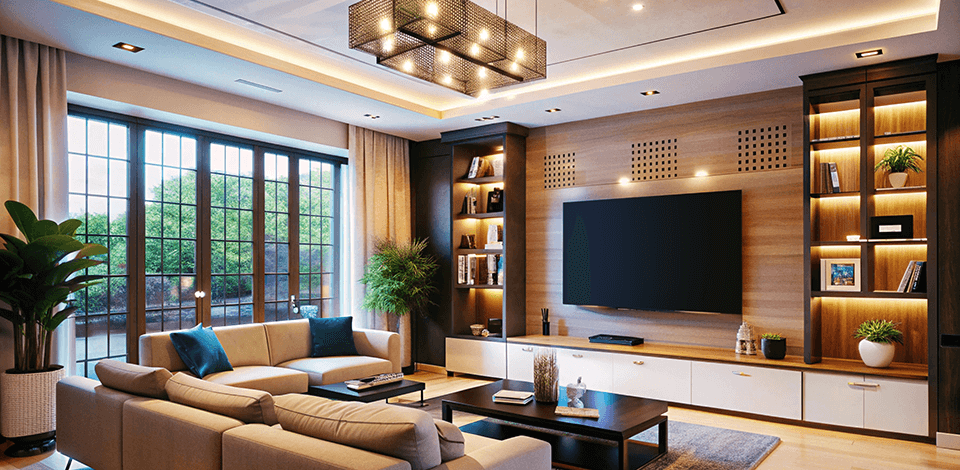
The modern style in interior design is defined by a reverence for minimalism, practicality, and the absence of heavily ornate elements. Its origins can be traced to the start of the 20th century, the height of the modernist movement.
You can recognize this style by clean geometry, simplistic shapes, and heavy usage of natural materials. Even in 2024, this approach has a significant effect on the interior design industry, weaving both contemporary, modern, and classic elements together.
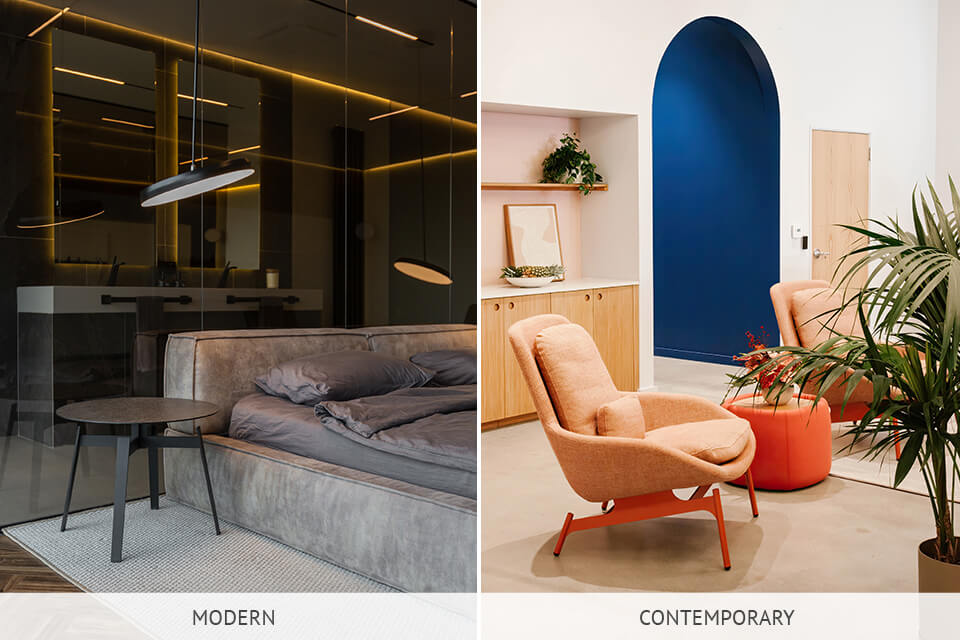
Whenever you hear someone talking about the modern style in home décor and interior design, they are usually referring to a visual style that originates from the start of the 20th century. Its trademark features are clean lines, basic shapes, and practicality. Meanwhile, the contemporary style is ever-changing and depends on what is popular in the interior design industry at the moment.
Where modern design relies on muted tones and minimalistic décor, contemporary spaces are often more colorful and eclectic. They also heavily use synthetic materials, be it plastic or metal, while modern furnishing is mostly made of wood and stone.
If you want to receive a modern style home interior design, you can go one of two routes: receive help from an experienced interior designer or take advantage of online virtual staging services. Even though both strategies have their unique benefits, the latter is being used more and more often due to being more flexible, budget-friendly, and technologically advanced.
Hiring an Interior Designer gives you
✔️Customization: A professional designer can provide personalized recommendations, adjusting the design to fit your unique taste, house layout, and budget. They often have years of experience and a keen eye for mixing furnishings, color combinations, and other elements to create a unified modern look.
✔️Project management: Designers can tackle all the stages of the project from conceptualization to finding materials and managing the installation process, allowing you to focus on other aspects of your life.
✔️On-site presence: Examining everything in person enables the designer to notice architectural details and fix potential problems on-site, which can guarantee a flawless result.
❌High cost: Taking advantage of interior design services can be expensive, with their pricing ranging from hourly wages to a percentage of the overall project budget. This can be unaffordable to many people, particularly if you have a smaller, modest project in mind.
❌Time-consuming: The process can take a lot of time, entailing back-and-forth discussions, the creation of mood boards, and milestone approvals requiring a lot of before you even get to the active design stage.
Virtual Staging Services (Recommended) gives you
✔️Affordability: Virtual staging services are usually significantly cheaper than contracting the help of an interior designer. You start by only paying for a digital design created for your space without having to invest in any physical items.
✔️Instant results: Virtual services let you visualize a variety of distinct interior designs in a modern style. Such platforms employ robust solutions that deliver quick results filled with furniture, a layout that matches your specifications, and suitable décor.
✔️Flexibility: Virtual staging is ideal for trying out a wide range of designs and layouts quickly, which would be a much slower and arduous process with a designer. Such services let you apply different styles and make changes with minimum expenditures until you find the perfect look for your home.
✔️Convenience: As everything is done online, you can work on your interior design from any location or device without having to organize several in-person meetings or constantly visit your property. This is a significantly quicker and hassle-free approach.
❌Lack of physical oversight: In contrast to an interior designer who constantly has eyes on the project, virtual staging has you entrust the implementation of the project to you or a contractor, which can be an issue if you don’t have well-developed DIY skills.
❌Generic templates: Some platforms tend to rely on premade templates, providing fewer customization options than a designer who can create a unique layout for your home.
Modern styles in interior design rose to prominence at the time the modernist movement was in full swing at the beginning of the 20th century, putting minimalism and practicality on a pedestal.
This style is known for simplistic spaces with minimum furnishing, neutral tones, open floor plans, and clean lines. It also heavily relies on natural materials like wood, leather, and stone that help highlight the raw aesthetical appeal of this style.
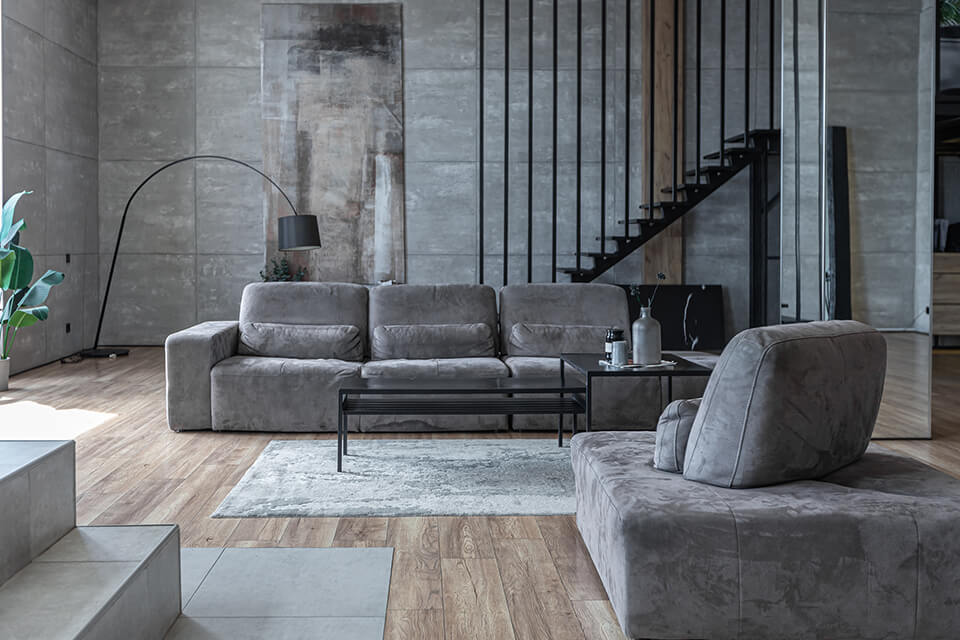
The industrial revolution happening during that era made such materials as concrete and steel very popular, which prompted interior designers to heavily feature them in their projects. As a result, this led to the domination of straight, clean lines, as many spaces offer an intricate balance of vertical and horizontal lines of columns, steps, and furniture.
Examples of practical items with geometric designs are:
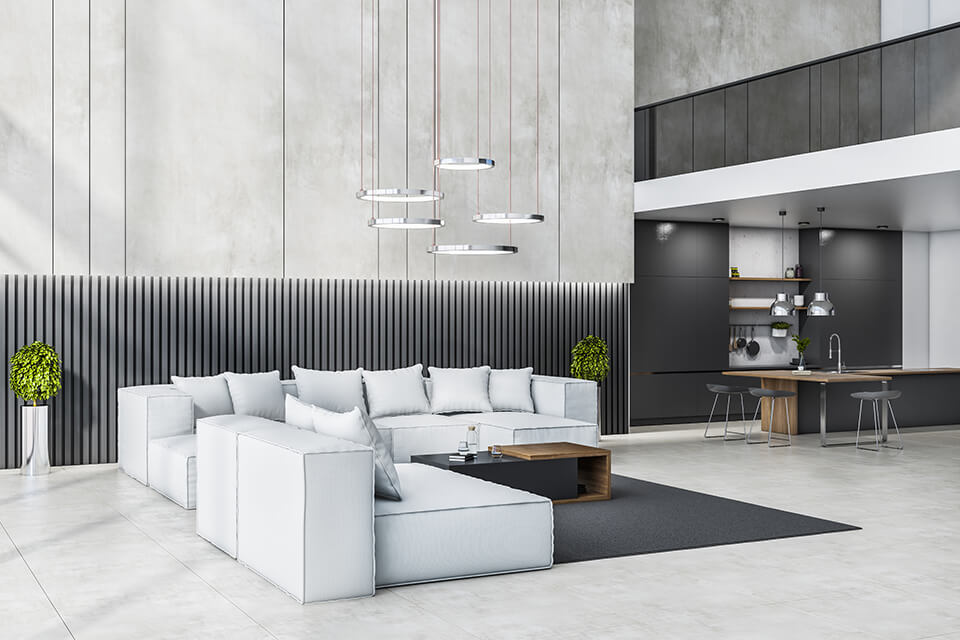
Modern interior design in a classic style usually features open layouts that make the venue feel spacier and secure a more natural flow between areas. This is particularly evident when viewing homes where living, dining, and kitchen rooms seamlessly mix into a cohesive whole.
It’s common to employ furniture instead of walls to separate different areas. For instance, a kitchen island can be used to set the kitchen apart from the dining room while a sectional sofa can make an open living room more defined.
Distinguishing feature – big windows. The introduction of reinforced materials enabled architects to create bigger windows than was previously feasible. As such, many modern-style houses have large windowpanes and minimalist window dressing to maximize the amount of natural lighting inside the building.
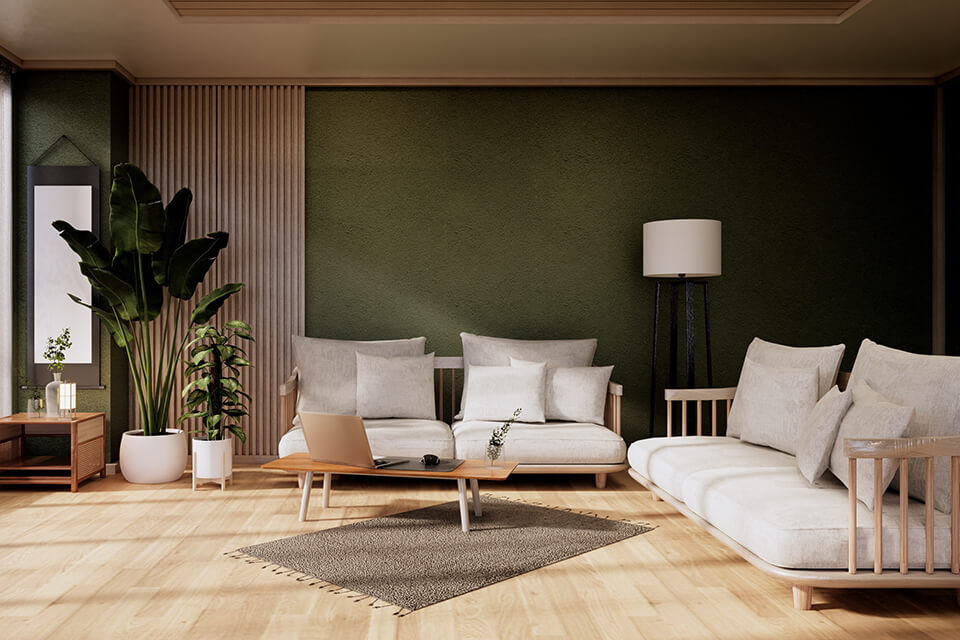
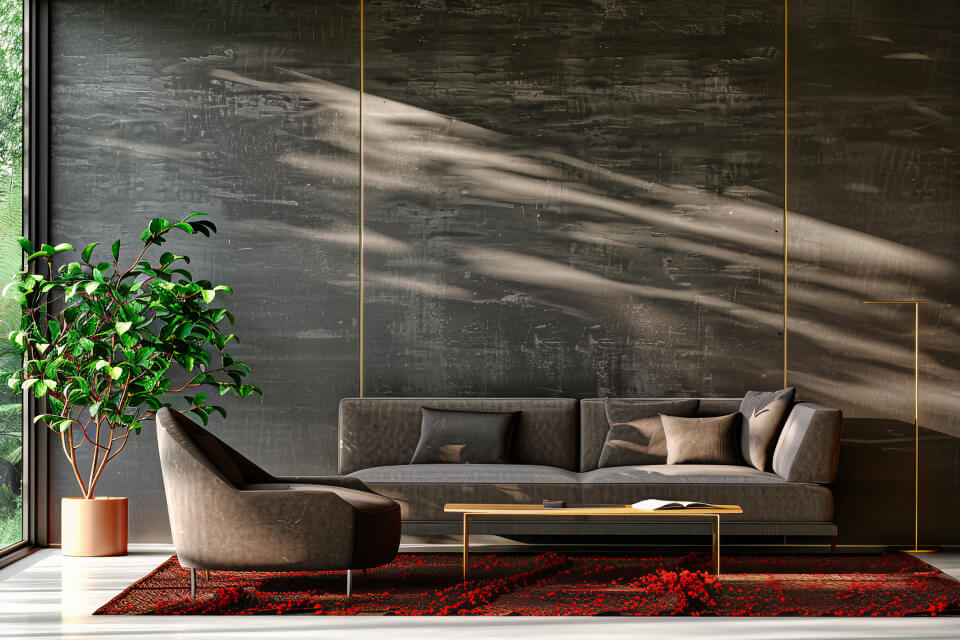
Modern interior design puts a premium on uncluttered spaces. As mentioned before, you’ll usually see open floor plans that don’t have any barriers between different areas and plenty of large windows. Combined, these two features help achieve a more serene, airier, and flowing space.
Pro interior designer choice. After the overreliance on luxurious ornaments of the Victorian area, designers who accepted modernity went for the stillness of neutral walls instead. Greys, whites, and different soft pastel tones are the hallmarks of modern spaces. If you’d like to take it a step further, you can check out De Stijl, which features block primary colors – blue, red, and yellow.
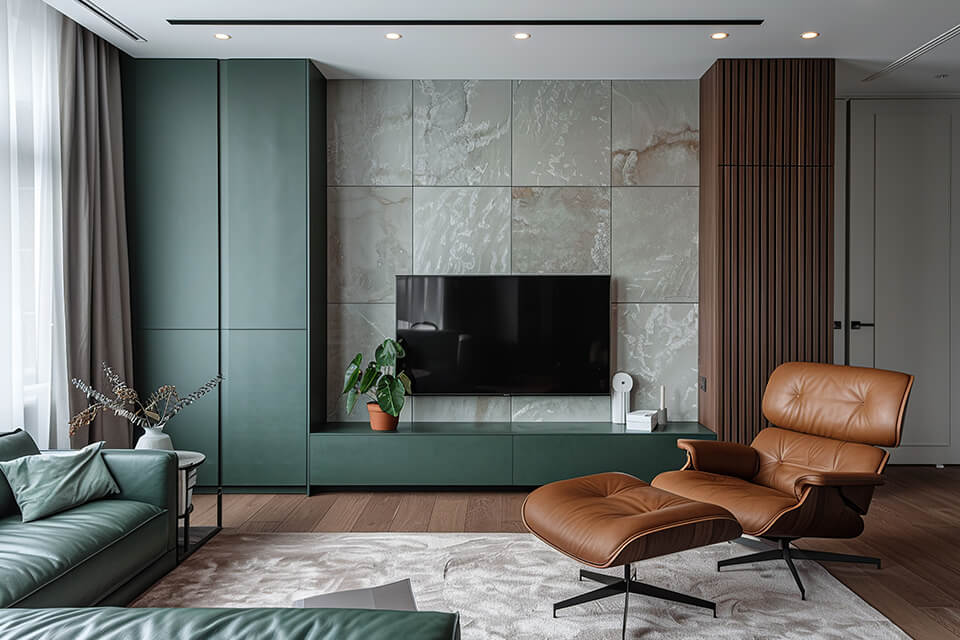
A key distinctive feature of this interior design style is its focus on practicality. Furnishing items and decorations aren’t picked based purely on their aesthetic qualities, but more because of their usefulness. Each item needs to have a defined purpose and decorative elements are kept to a minimum.
Modern furniture usually consists of low, horizontal items and clean lines, often made of wood or leather. The surfaces are typically smooth and don’t have any ornaments. You will also rarely find any intricately decorated pieces or curves, as the designers prioritize minimalism and functionality.
Distinguish features - low and long furniture. Long furniture items with a low profile help establish a homey, modern feel, especially when everything is made of wood and metal and adorned with leather, fabric upholstery, wooden veneers (like the ones you’d see on classic midcentury Eames chairs), glass chrome, steel, and concrete.
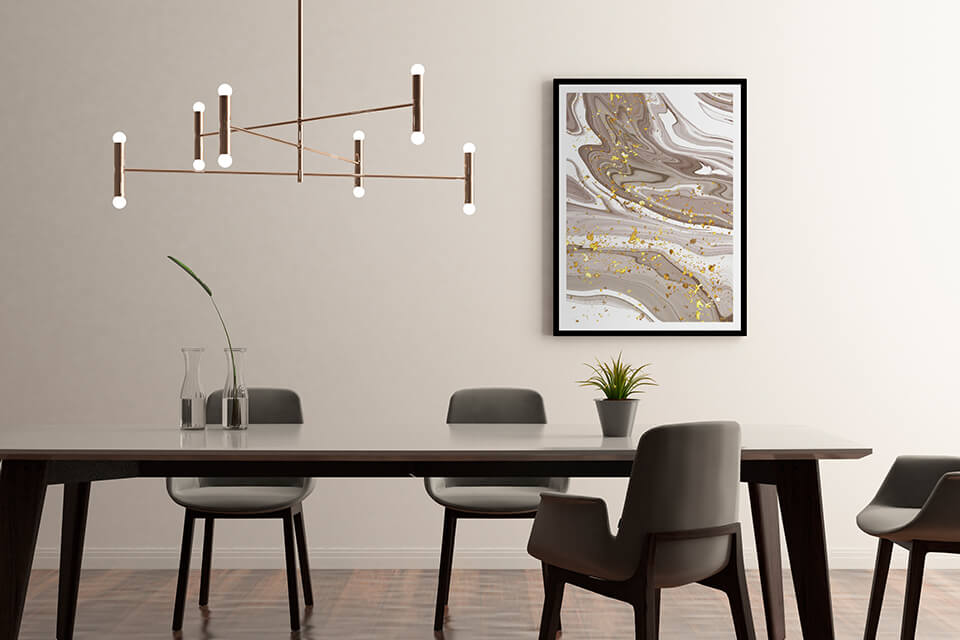
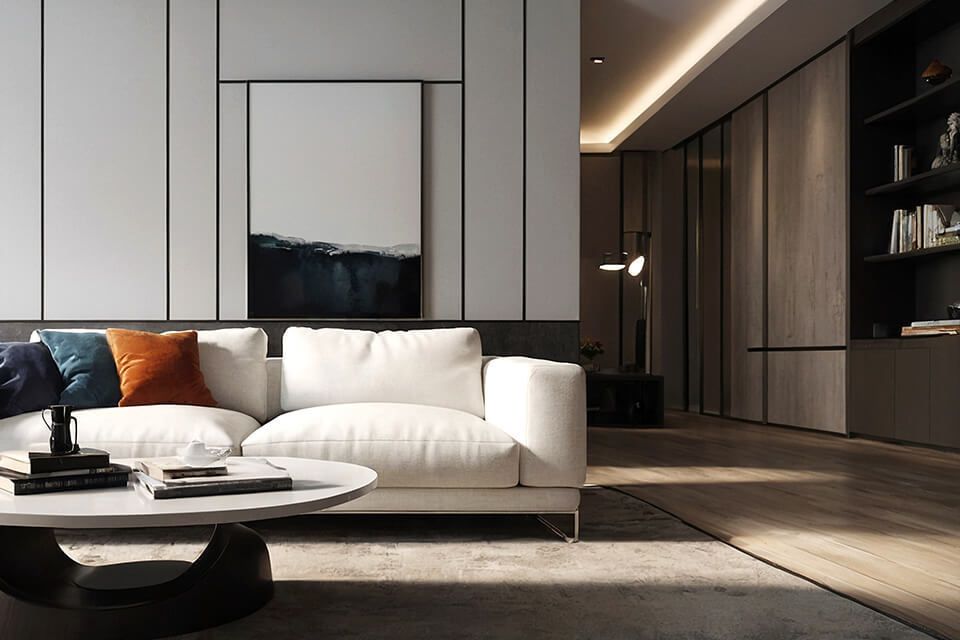
Classic modern décor is simplistic and practical. It features neutral colors and natural materials that ooze warmth. However, that doesn’t mean such interiors don't have any decorations at all, as you can fill with space with items that help convey the specific sense of style you're going for.
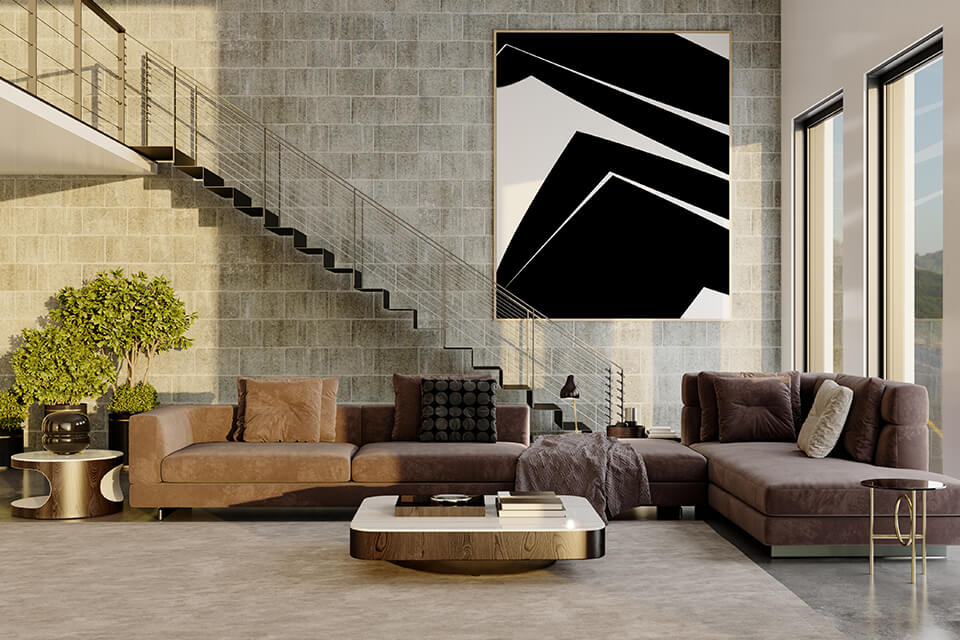
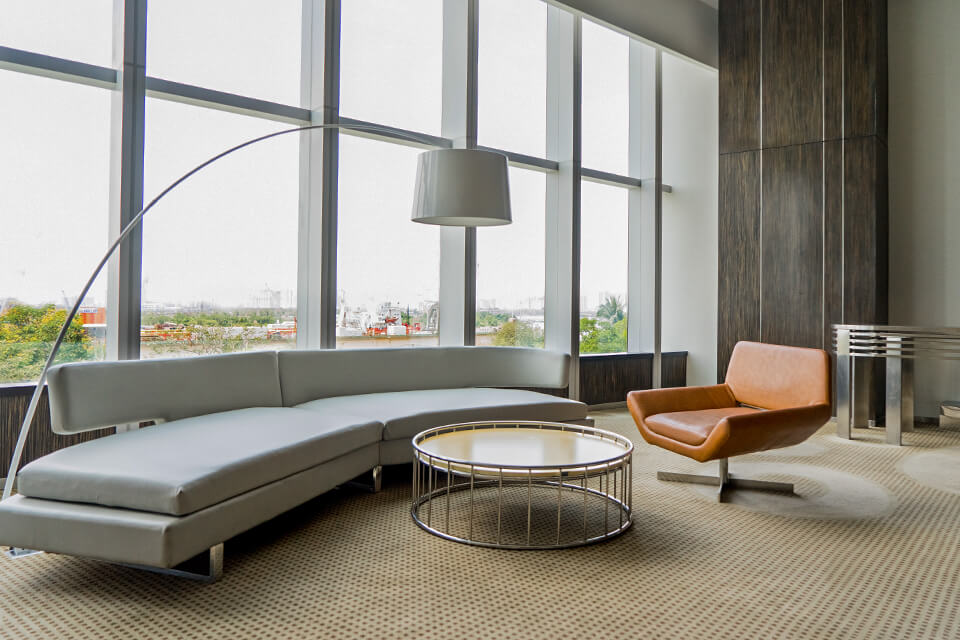
Mid-century modern furniture. Defined by clean lines, natural wood, and striking upholstery hues (frequently with wool textures), midcentury modern furnishing items excel at conveying a simple, practical design approach. Classic examples are the Egg chair created by Arne Jacobsen and the Eames lounge chair and ottoman made by Herman Miller.
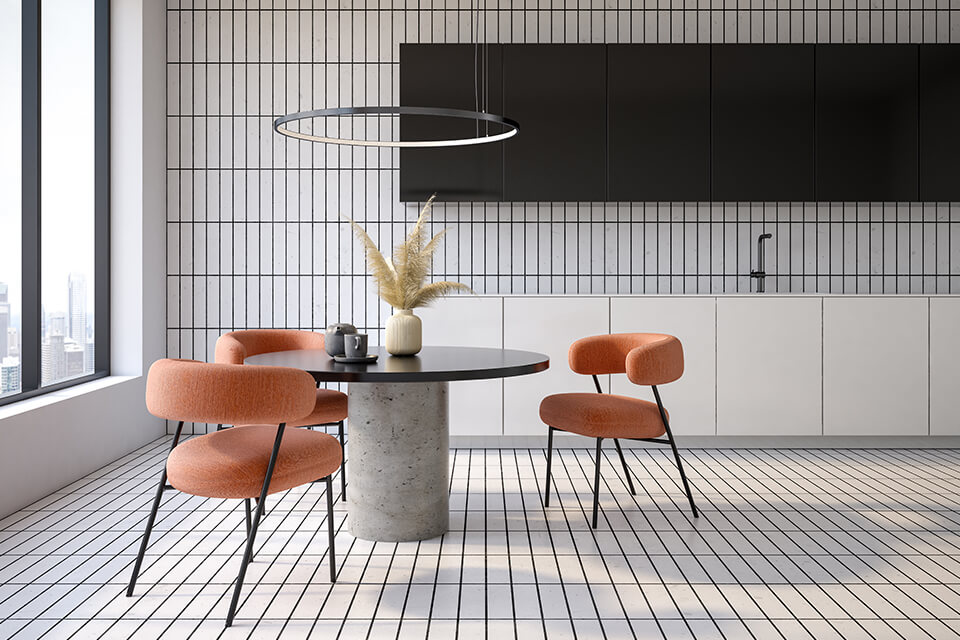
Brightly colored accents. Splashes of vibrant red, blue or yellow always feel modern. Influences from the Bauhaus and De Stijl art movements introduced rich colors to a previously muted style. This is why you can frequently find modern spaces with vividly colored artwork or accent elements.